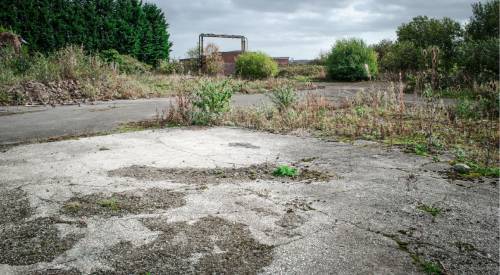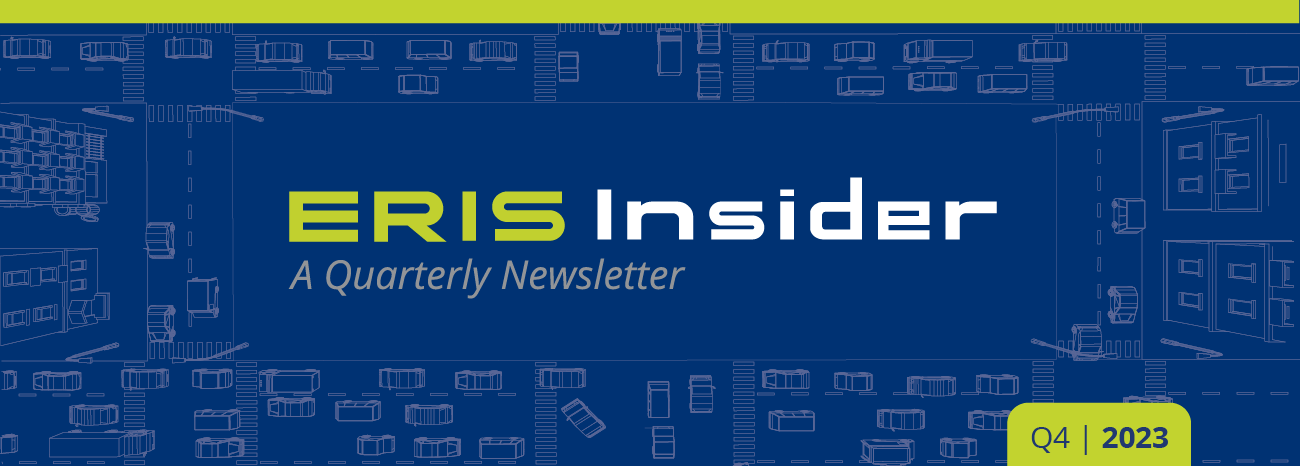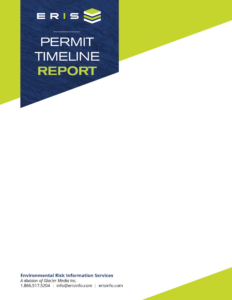IN FOCUS

Reopeners, Increased Cleanup Costs Loom As Government Continues to Target PFAS
In October 2023, an EPA regional official announced that the agency will reopen Superfund cleanups at sites contaminated by per- and polyfluoroalkyl substances (PFAS) on a case-by-case basis, which could have “monumental implications” for the regulated community. This statement comes before EPA finalizes its proposed rule designating two PFAS – perfluorooctanoic acid (PFOA) and perfluorooctanesulfonic acid (PFOS) – as hazardous substances under the Comprehensive Environmental Response, Compensation, and Liability Act (CERCLA).
The White House Office of Management and Budget completed an interagency review of EPA’s proposal in December, putting the agency on track to finalize the rule by March. EPA is also considering designating seven more PFAS as hazardous substances. But, as the EPA official said, the agency isn’t waiting for the CERCLA listing to assess whether already remediated Superfund sites need to be reopened due to PFAS contamination.
The potential for staggering financial liability associated with addressing PFAS is a game-changer for commercial real estate transactions, the environmental due diligence process, property cleanups, and brownfields redevelopment.
Reopening Superfund and Brownfield Sites
Designating PFAS as hazardous substances could impact hundreds of Superfund and brownfield sites across the country – prolonging the remediation process, requiring new cleanup technologies, and adding significant costs – particularly if EPA begins reopening closed sites to address PFAS contamination. Because of their ubiquity in the environment, PFAS could also be the reason for the designation of Superfund status once the CERCLA rule is finalized.
Some sites are already reopened under EPA’s existing mandatory five-year review process. Five years after a Superfund cleanup begins, EPA evaluates the site to ensure that the implemented remedy still protects human health and the environment. Adding PFAS to the hazardous substances list could significantly affect this process, especially since earlier cleanups did not consider PFAS contamination.
Cleaned brownfield sites might also be reopened, requiring additional cleanup and resources. Generally, once a brownfield site has been remediated, the relevant state issues a document declaring the cleanup complete. However, the state typically reserves the right to reopen brownfield sites under certain conditions, including the discovery of previously unknown contamination and the discovery that remaining contamination is more toxic than previously believed. In this case, states may reopen brownfield sites to address PFAS contamination.
Vapor Intrusion Pathway Potentially on the Table
Adding a new wrinkle, EPA recently announced the results of its PFAS vapor intrusion (VI) field test, finding that the potential for PFAS vapors to migrate from soil and groundwater into the air warrants VI assessments at sites with high concentrations of “volatile” PFAS. Although EPA has not issued any specific toxicity values or offered formal guidance for PFAS VI assessments, this indoor air exposure pathway will need to be considered at properties with PFAS that have occupied structures.
Costly Cleanups, Liability Issues
Under CERCLA, potentially responsible parties, including former and current property owners, can be held strictly liable for the full cost of cleaning up hazardous substances, even if multiple parties are responsible for the contamination. This is especially significant in the PFAS context, given the extent of PFAS contamination across the country. Although cost recovery or contribution lawsuits are an option under CERCLA, litigation is costly and time-consuming.
It’s also very difficult and expensive to remove PFAS from the environment. For example, one study estimates that it costs between $2.7 million and $18 million per pound to remove and destroy PFAS from municipal wastewater. In recognition of the high costs of PFAS cleanups, the Bipartisan Infrastructure Law (BIL), signed by President Biden in November 2021, dedicated more than $5 billion to clean up legacy pollution at Superfund and brownfield sites, including PFAS.
Litigation Concerns
The high costs of PFAS cleanups and the potential for litigation over contamination are two reasons industry is concerned about the hazardous substance designation; more than 60,000 comments were filed in response to the proposed rule. EPA responded to these concerns with two public listening sessions on enforcement issues and an enforcement discretion policy shielding “passive receivers” from Superfund liability. However, these efforts haven’t been enough to assuage concerns, and many in the regulated community want formal statutory liability protections. While lawmakers have introduced legislation that would protect industry and municipalities from CERCLA liability if EPA designates PFAS as hazardous substances, no significant progress has been made.
Reassess Strategies
As regulations and enforcement priorities surrounding PFAS evolve, property owners and businesses will encounter escalating costs for cleanup efforts. Navigating this challenge effectively requires a proactive assessment of proposed regulations and policies. It's crucial for all involved parties to consistently reassess environmental due diligence strategies in real estate transactions, ensuring compliance with new rules and anticipating both current and future PFAS-related cleanup liabilities and costs.
CRE MARKET UPDATE
The Latest Market Updates in the U.S. Commercial Real Estate Industry
U.S. commercial real estate (CRE) investment volume experienced a significant decline, falling by 54% year-over-year in Q3 to $82 billion, according to CBRE Research. The trailing four-quarter volume, ending in Q3, decreased by 57% to $400 billion. (Fig 1)
Multifamily remained the top-performing sector with $29 billion in transaction volume, followed by industrial and logistics at $20 billion and retail at $15 billion. The office sector faced challenges, marked by weak demand and high vacancies, leading to a 67% year-over-year decrease in investment volume in Q3, amounting to $10 billion. (Fig. 2)
Greater Los Angeles continues to be the top investment market with $35.2 billion, followed by New York with $34.7 billion, and with Dallas/Ft. Worth $20.9 billion. Orlando experienced the most significant decrease in investment volume at 68%, while Chicago had the smallest decline at 46%. (Fig 3)
Private investors were net buyers, representing 62% of total investment volume in Q3, accounting for $51 billion. Institutional, Real Estate Investment Trusts and cross-border investors were net sellers during this period. Foreign investment capital decreased significantly by nearly 55% year-over-year to $3.4 billion. This decline in foreign investment was attributed to factors such as rising interest rates and a strong dollar. (Fig 4)
To view larger images and dive deeper into the data, click on the images above.
Commercial Real Estate 2024 Market Forecast
The latest economic forecast indicates that growth will slow in 2024, though a recession may be avoided and a soft landing achieved. Lower demand and prices for CRE will create compelling buying opportunities, according to the company’s 2024 U.S. Real Estate Outlook.
CBRE’s economists anticipate that resilient consumer spending will counter “economic headwinds” next year, including high interest rates and near recessions in Europe and China. The latest predicts the U.S. unemployment rate rising slightly to 4.5% and an easing of inflation that will allow the Federal Reserve to reduce short-term interest rates to around 4.25% by the end of 2024 and to 3.5% in 2025.
This anticipated economic bottoming out and initial rebound will affect all CRE sectors. It is expected that lending will remain tight and property values will decline further in the first half of the year before activity rebounds in the second half, which will result in a topping out of office vacancies and a wave of multifamily construction, according to CBRE.
“There is a bit more real estate pain ahead, but stabilization and the early stages of recovery aren’t far behind that,” said Richard Barkham, CBRE Global Chief Economist and Global Head of Research. “Investment volumes will be down overall for 2024 but will start an upturn in the second half. And leasing activity will pick up a bit from a sluggish 2023.”
Source: CBRE U.S. Real Estate Market Outlook 2024, Dec 12, 2023
Latest Developments
SEC’s Final Climate Risk Disclosure Rule Delayed
The date for finalizing the SEC’s proposed climate risk disclosure rule – which would require U.S. companies to provide information on the climate risks facing their business, their plans to address those risks, and metrics detailing their climate footprint (including greenhouse gas emissions) – has been reset for April 2024 after facing multiple delays.
What the Proposed Rule Requires and Pushback
The rule, which was first proposed in March 2022, would require material disclosures related to climate risk and specifies disclosure of Scope 1 (emissions from fuel burned in owned or controlled assets), Scope 2 (from purchased electricity, steam, heat, and cooling in buildings and production processes), and Scope 3 (emissions from upstream & downstream indirect sources). It also requires disclosure of any existing targets around emission reductions, energy use, nature conservation, or revenues from low-carbon products. Aditionally it requires disclosure of transition plans to achieve those targets, including information on offsets and renewable-energy credits.
SEC’s proposal has faced significant pushback, especially from companies, trade groups, auditing firms, and some state attorneys general who have threatened legal action if the agency moves forward. The SEC received more than 16,000 comments on the proposed rule. Critics are particularly concerned about the Scope 3 requirements, which would include material disclosures related to supply chain emissions. Critics also argue that the SEC is overstepping its bounds by wading into climate policy. Such pushback is likely one reason for the SEC’s delay.
State and International Regulations
While the SEC continues to delay its proposal, other climate disclosure rules are emerging domestically and abroad. For example, two new laws in California will require companies to disclose climate-related financial risks and greenhouse gas emissions beginning in 2026 (see State Developments section below). Another California law that took effect January 1, 2024, requires companies to disclose carbon offsets online. The novelty of that law may invite lawsuits. It’s also possible that the potential for conflicting state rules could be affecting the SEC’s timeline.
Additionally, the European Union’s Corporate Sustainability Reporting Directive requires certain companies doing business in Europe to publish information on their environmental and social risks and impacts. Some companies must begin complying this year. Without a U.S. rule, American companies could be subject to the EU’s more extensive requirements (specifically regarding Scope 3 supply chain emissions reporting, which is already a sticking point for critics of the less restrictive SEC proposal).
What This Means for Businesses
Increased regulatory scrutiny from the SEC, states, and the EU highlights the need for businesses to conduct environmental due diligence and record accurate data consistently. If the SEC’s climate disclosure rule is finalized this spring (note, the April target is discretionary and not a regulatory deadline), companies will have to account more formally for how environmental performance affects their bottom line. Regardless, they may already need to comply with existing state and international climate disclosure rules.
Remediating Dry-Cleaning Sites: Challenges and Legal Considerations
On October 25, the webinar titled “Dry-Cleaning Sites Part III: It’s Time to Remediate!" brought together experts Michael F. Marcon, VP and Principal at InControl Technologies, and Lawrence P. Schnapf, Principal at Schnapf LLC and Professor of Environmental Law and Real Estate Transactions, New York Law School. In this concluding session, the experts explored the complex challenges posed by dry-cleaning sites, which were once integral to retail landscapes but evolved into environmental liabilities due to the use of perchloroethylene (PCE). This solvent resulted in contamination of soil, groundwater, and air, transforming these businesses into significant sources of environmental concern.
The discussion addressed the financial burdens imposed on landowners and developers for the cleanup and remediation of these sites, with added complexities arising from indoor air quality issues. The inherent challenge of small physical footprints associated with dry cleaners further constrained potential remediation alternatives. Key highlights of the 60-minute webinar included an examination of the challenges in selecting remediation strategies, exploration of commonly employed technologies for remediation, a review of data and design considerations for effective response action plans, and a comprehensive discussion on the legal issues and potential liabilities linked to remediating dry-cleaning sites.
The webinar provided valuable insights for approaching environmental remediation at these challenging sites. Watch recording.
Key Takeaways:
- Environmental Liabilities of Dry Cleaning:
Dry-cleaning sites, historically employing perchloroethylene, pose substantial environmental risks, leading to soil and groundwater contamination. Reports indicate that over 75% of around 30,000 dry cleaners have contributed to environmental pollution.
- Remediation Technologies:
Diverse technologies, such as soil excavation, vapor extraction, bioremediation, air sparging, and chemical oxidation, find application in remediation efforts. The experts stressed the critical need to choose technologies tailored to specific site conditions for optimal effectiveness.
- Challenges in Soil Excavation:
While soil excavation is a prevalent method for remediation, both speakers acknowledged the hurdles associated with it. Agencies often resist due to the potential relocation of contaminants, raising environmental justice concerns and triggering community objections.
- Legal and Due Diligence Challenges:
Waste categorization, vapor intrusion requirements, and contractual protections demand careful consideration. Understanding waste types, potential liabilities, and securing insurance coverage for off-site impacts emerged as crucial components.
State Developments
California Enacts Major Climate Risk Disclosure Laws

On October 7, 2023, California Governor Gavin Newsom signed a pair of climate disclosure laws that will require companies to disclose greenhouse gas (GHG) emissions and climate-related risks. The laws are the most significant climate disclosure laws enacted in the United States to date, ahead of the anticipated federal climate disclosure regulations from the Securities and Exchange Commission. The Climate Corporate Data Accountability Act (S.B. 253) requires companies doing business in California to measure and report Scope 1, 2, and 3 emissions in conformance with the GHG Protocol, beginning in 2026. The law applies to public and private businesses with annual revenue in excess of $1 billion that do business in California. The Climate-Related Financial Risk Act (S.B. 261) will require companies doing business in California to report climate-related financial risks in accordance with the Task Force on Climate-Related Financial Disclosures' (TCFD) recommendations or successor standards and the measures the company is taking to mitigate and adapt to these risks. The law applies to public and private companies with annual revenue in excess of $500 million that do business in California, excluding insurance companies.
Wisconsin Proposes Changes to Soil Cleanup Standards Used to Investigate and Remediate Environmental Contamination

The Wisconsin Department of Natural Resources has issued proposed amendments to the state’s soil cleanup regulations. The proposed changes will primarily affect companies that are responsible for cleanup of contaminated soil and other contaminated media (“Responsible Parties”) as well as landowners whose property is part of a soil remediation project. Many of the proposed revisions are intended to create consistency among state and federal approaches for determining soil remediation standards. For example, the amendments would provide more consistency between the cleanup standard descriptions for soil and other media, create consistency between state and federal approaches to calculating allowable Residual Contaminant Levels, and add consistency between soil cleanup standards and land use classifications. The changes would also increase the ability of parties to self-implement portions of regulations, reduce the number of regulatory reviews required, and allow for site-specific standards based on risk exposure of the intended land use. The comment period closed Dec. 21, 2023.
Proposed Alabama Rules Would Modernize Brownfield Program

The Alabama Department of Environmental Management, Land Division, is proposing rules that would significantly expand the state’s Brownfield Redevelopment and Voluntary Cleanup Program. The intent of changes is to reduce barriers to redevelop abandoned properties as well as those that have been left idle or underused due to real or perceived environmental contamination. The new rules would implement HB378, which the Alabama legislature introduced and passed during its 2023 session.
The proposed changes would:
- Provide potentially responsible parties with limitations of liability with respect to a brownfield site, conditional to compliance with the VCP requirements and obtaining a certificate of completion from the Division.
- Create the Brownfield Remediation Reserve Fund to provide up to $4M in financial assistance for brownfield projects.
- Establish brownfield redevelopment districts that allow local governments to designate areas for brownfield redevelopment and offer incentives for developers, such as tax abatements, tax increment financing, and reduced permitting fees.
- Simplify compliance steps by incorporating federal standards for assessments and remediation.
These enhancements aim to strengthen the state’s pipeline of development ready sites and encourage the reuse of underutilized properties. Redeveloped brownfield sites not only remove contamination sources, they have demonstrated the effect of creating many long-term benefits to communities. The comment period closed Dec. 15, 2023.
Thank you to STP ComplianceEHS for contributing the articles under State Developments in this edition.
ASTM Developments
Upgrading to ASTM E1527-21 for Phase I Site Assessments
In December 2022, the U.S. Environmental Protection Agency (EPA) amended its All Appropriate Inquiries (AAI) rule to reference ASTM International’s updated Phase I Environmental Site Assessment (ESA) standard, E1527-21.
The rule, which took effect on Feb. 13, 2023, allowed the prior standard, E1527-13, to be used for one more year. But beginning Feb. 14, 2024, E1527-13 can no longer be used to satisfy AAI requirements under the Comprehensive Environmental Response, Compensation, and Liability Act (CERCLA). While the revised standard is not an EPA regulation and is not required for AAI compliance, it is now widely recognized as the industry standard for Phase I assessments, which are required for most CRE transactions.
To learn more about the key changes that will impact Phase I practices, you can read our blog and related materials here. You can also access the recording of our most recent webinar on this topic here.
New EP Certification Program Set to Launch Spring 2024
ASTM International is set to launch a certification process designed for environmental professionals (EPs) this spring. The certification process will comprise three components: individuals must meet the education, training, and experience criteria outlined in 40 CFR 312.10, complete an ASTM training course, and successfully pass an examination to attain the certified EP status.
According to the ASTM, the program will provide another option to encourage a skilled and knowledgeable workforce of certified professionals to comply with industry standards, increase customer confidence, and help stay competitive in an evolving market.
ERIS is hosting a webinar on this topic on Wednesday, February 21 (1 pm ET), when Paul Zovic, Principal Consultant with PZ Group, and Committee E50 Chair Tim Haley will outline the program’s purpose, what it entails, and what one receives upon completing it. There will be time for a full Q&A.
Lender Series Podcast: Why Every Lender – Big and Small, Needs an Environmental Risk Policy
 This important topic was discussed in a recent podcast with environmental risk professional and industry veteran, Georgina Dannatt and ERIS’ Dave Colonna, Director of Lender Services. During their conversation, Georgina outlined how to best establish and manage a bank's policy to ensure regulatory compliance and reviewed best practices for managing risk.
This important topic was discussed in a recent podcast with environmental risk professional and industry veteran, Georgina Dannatt and ERIS’ Dave Colonna, Director of Lender Services. During their conversation, Georgina outlined how to best establish and manage a bank's policy to ensure regulatory compliance and reviewed best practices for managing risk.
As Co-Chair of the E1528 ASTM Transaction Screen Committee, Georgina offered insight on the standard and when its use is most appropriate compared to E1527.
She described the importance of understanding your bank’s culture to help build out a risk matrix which can drive the decision-making process in terms of what level of due diligence is most appropriate for certain loans and various property types.
They covered how important it is to have a clearly defined ‘Scope of Work’ for each assignment to help facilitate communication between all stakeholders from the lenders to the environmental consultants who might be working on the project.
Having worked for both large and small institutions throughout her career, Georgina spoke to the differences, with the formula remaining the same. Sound policy guided by a strong scope of work will lead to a successful and well-managed environmental risk department, no matter the bank's size.
You can hear the full discussion with Georgina Dannatt, here.
Featured ERIS Data Set
The Permit Timeline Report Provides Essential Information About a Property’s Improvements History
The ERIS Permit Timeline Report serves as a valuable tool by offering a comprehensive overview of a property's past and present conditions, with a specific focus on the permitted work carried out on the property.
The report allows users to easily access essential information about building permits, including job cost, permit type, and contractor details for all major systems. This report can help satisfy compliance with EPA's Standards and Practices for All Appropriate Inquiries (40 CFR Part 312) and ASTM Standard Practice for Environmental Site Assessments (ASTM 1527-21), providing a detailed picture of property risk. Coverage can vary from municipality to municipality.
By analyzing historical permit data, the report helps users identify potential environmental conditions on a property, such as underground storage tanks, pump islands, electrical connections, water, sewer, natural gas, changes to signage, and septic tanks. This environmental insight is invaluable for evaluating potential risks during real estate transactions, allowing for informed decision-making and effective due diligence.
If you have questions or want to learn more about this data set, please reach out to us at [email protected] or live chat with us.
Spotlight On
Special Profile: Brian Peterson, Manager, Client Services, Mountain West
In this issue, we spotlight Brian Peterson, Client Services Manager for the Mountain West Region. Brian also provides key service support for Partner Engineering & Science.
Brian is a seasoned professional with a remarkable career spanning more than two decades in the environmental data services field. Embracing a collaborative approach, he considers himself a teammate to his clients, dedicating himself to doing whatever it takes to ensure the success of their projects. With experience in production, sales, and now client service, he leverages his diverse background to assist ERIS clients every day.
What he loves most about working at ERIS is the team atmosphere. From the Production staff to Management, Marketing, Regional Account Managers, Support, and Client Service teams, everyone has unique strengths and is eager to collaborate, and continuously improve our processes for the benefit of our customers.
When he's not working, Brian enjoys spending time with his wife, two children, and dog in Larkspur, Colorado. He loves camping, playing the banjo, and attending live music events.
To learn more about Brian Peterson, click here.
Upcoming Events

February 5-8, San Diego, CA: Join the ERIS Team at the EBA 2024 Annual Conference.
February 21, Virtual – ERIS Webinars presents ASTM’s NEW EP Certification Program – What You Need to Know. ASTM International is in the final stages of developing an environmental professional (EP) certification program and anticipates rolling it out in the Spring of 2024. This FREE webinar will outline the program's purpose, what it entails, and what one receives upon completing it. For more information, or register here.
February 26-27, Tempe, AZ: Join Rich DeMusis and Frank Dickerson at the Annual EPAZ Conference (Environmental Professionals of Arizona).
March 19, Skaneateles, NY: Join Nick Freeman at the Annual Technical Conference (AWMA/AIHA).
March 25-27, State College, PA: Nick Freeman will attend the ESWP’s PA Brownfields Conference.
March 28, Clemson, SC: Join Garrett Rosenbaum at the Clemson University Hydrogeology Symposium.












